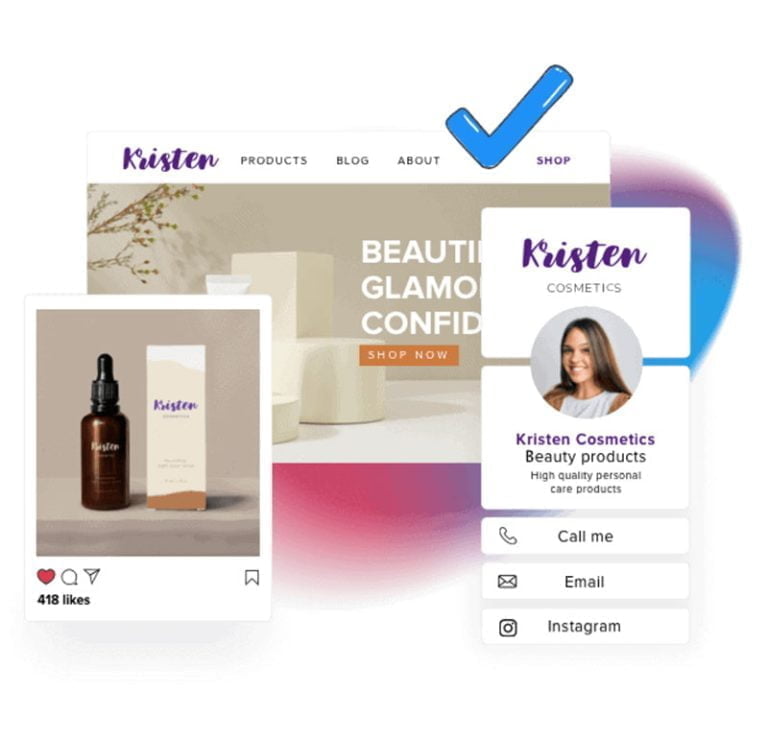
The disconnect between collecting data and helping customers is a legitimate hurdle, but it’s far from impossible to overcome. Here’s how cloud computing can help.
A company can’t use data to create genuine customer empathy if customers don’t trust how the company uses data in the first place.
getty
Every company wants to be “data-driven” and “customer obsessed.” After all, the evidence overwhelmingly shows that in the digital world, customers are both empowered and likely to switch brands if they have a bad experience. But, is data the real key to being more customer-centric?
Yes and no. Data is a signal that indicates something about customer experiences, but it doesn’t get to the core of what actually happened. It doesn’t help you to empathize with what the customer is actually experiencing. In partnering with businesses across the Fortune 500, I’ve seen many invest in their data, hoping to better understand their customers, yet come out feeling more disconnected.
Likewise, relying on a few data experts or siloed data analytics teams is not enough. If only a handful of people can empathize with customers, the company as a whole is unlikely to develop insight into customers or enthusiasm for finding ways to better serve them.
This disconnect between collecting data and helping customers is a legitimate hurdle, but it’s far from impossible to overcome. Thanks to the power of cloud computing, seeing the larger story is more feasible than ever.
Turning data into empathy for the customer
Table of Contents
In the brick-and-mortar world, most customer interactions take place face-to-face, which makes ingesting and acting on data far more intuitive than in digital spaces. If customers repeatedly bump into a display on the way to the cash register, the store manager doesn’t need a spreadsheet to realize they should move the display.
This immediacy breeds empathy—and injecting that empathy into the digital world is essential to making “customer obsession” work.
I’ve watched companies regain millions in otherwise lost revenue as they move from isolated data insights to a customer-centric approach to data-driven decisions. So how can more organizations make this journey?
Here’s a scenario I’ve seen many times as CEO of Quantum Metric: people visit a particular website, load up their virtual shopping carts, and then abandon the process during checkout.
Abandonment rate is a signal that something may be wrong—but what? There is no empathy in the insight, just observation. This makes it difficult to identify what adjustments might be necessary, let alone most impactful.
In contrast, suppose company leaders also know the following:
- Most of the shoppers bail while trying to enter their email address.
- The website accepts only verbatim email addresses, so if a customer hits the space bar after entering their information, the website rejects the submission;
- Most people who abandon checkout hit the spacebar when inputting their email addresses, and after several unsuccessful attempts, some become so livid that they resort to rage-typing into the text field, tapping out messages like “why the @!*# doesn’t this work???”
With this fuller story, it’s easy to visualize the experience and fast-track fixes, just as a manager can see customer experiences in a physical store. It offers some of the empathy people naturally develop through physical interactions. No one can run a company on empathy alone, of course, but by quantifying these customer moments and understanding their impact, teams can improve in more strategic ways. It creates something uniquely possible in digital interactions: a quantified empathy.
I’ve watched companies regain millions in otherwise lost revenue as they move from isolated data insights to a customer-centric approach to data-driven decisions. So how can more organizations make this journey?
Part of it is about technology, obviously, but part of it is also about organizational culture. Winning the hearts of customers isn’t just about engaging with them on digital platforms, and leveraging data isn’t just about producing insights or even prioritizing data-driven actions. It all needs to accrue to a workforce that wants to help customers and feels enabled to do so.
Related: How to be a data-driven retailer
Spreading customer empathy throughout the full workforce
Becoming a “data-driven” organization is not just a matter of rolling out software but also of rethinking every worker’s relationship to data and customer experiences.
Stocksy
As Conway’s Law has advised for half a century, companies tend to design systems that reflect their communication structures. Ex-Google CEO Eric Schmidt and former SVP of Products Jonathan Rosenberg made a similar observation, explaining that open internal communication structures and access to data allow for rapid iterative improvements to customer experiences, rather than the relatively plodding pace of pre-digital commerce.
To see the ramifications of these insights, consider how many businesses rely on a handful of data analysts for insights. Even if those people are skilled at deeply understanding customer problems, these organizations will never build customer-focused, data-oriented cultures if they keep tools in so few hands. No one develops empathy, let alone solutions, if they have to wait days for answers to a question, then still more days for any follow-up work.
Similarly, at some organizations, each business unit has its own data experts working with their own version of “data,” creating a culture marked less by quantified empathy and business impact than by competing voices. If those teams are not aligned in the first place, the organization’s information architecture and data efforts probably won’t be either.
Becoming a “data-driven” organization is not just a matter of rolling out software but also of rethinking every worker’s relationship to data and customer experiences. This raises a number of requirements:
- Data silos have to go. Everyone needs a common view into data, a single version of truth that defines relationships between customer experiences and business impact.
- The unified dataset needs to support front-end experiences for many different types of users. A front-line worker in a store, a digital marketer, and a CEO can all develop and act on quantified empathy to improve customer experiences—but they’re probably not going to want the same dashboards or use the same queries.
- Organizational culture involves the entire workforce, not just pockets of people here or there. Access to data insights tools should be widely available, and continuous product design processes should be developed so that whenever anyone uncovers a data-driven way to make customers happier, they’re equipped to act, communicate, or collaborate.
Making it happen in the cloud
To create a system for openness and communication, data is obviously square one—but it’s no end in itself. Many companies are not struggling to collect data so much as to harmonize it, extract the signal from the noise, prioritize the signal into actionable steps, and actually implement improvements that matter to customers.
For most organizations, this means leveraging cloud services, since renting petabyte-scale compute power as needed is orders of magnitude more feasible than building out one’s own data centers. Even for fairly technologically sophisticated companies, it may also mean relying on a mixture of internally-developed data analytics tools as well as third-party services—and in most cases, those services probably leverage the cloud too.
Many companies are not struggling to collect data so much as to harmonize it, extract the signal from the noise, prioritize the signal into actionable steps, and actually implement improvements that matter to customers.
Moreover, a company can’t use data to create genuine customer empathy if customers don’t trust how the company uses data in the first place. Organizations need to make data accessible, with self-service tools and real-time processing, but they also need robust governance. Making data widely available doesn’t mean making personally identifiable information (or PII) widely available, for example, and no business should deploy access to data if they don’t have visibility into how data is being used. Encryption, data retention, and a number of other issues may apply. Once again, the cloud offers the smoother path here, since customers of top providers often inherit the security technologies that those providers use themselves—and that have withstood real-world use from billions of customers and an astronomical number of interactions.
These are among the reasons that we built our services atop Google Cloud when we brought Quantum Metric to market, and why we later became a Google Cloud partner. We were attracted to things like BigQuery’s computational muscle, which can analyze petabytes of data in seconds, and Google Cloud’s security prowess, including not just encryption and other baked-in protections but also services like the Data Loss Prevention API, which we’re using to ensure PII is excluded from or encrypted in the data we collect.
All of this speaks again to the way culture and technology are inextricably connected, and how the organizations that build a vision around both are most likely to succeed. Using the power of the cloud, organizations can harness the value of quantified empathy to build a more customer-centric culture that moves the needle for their digital business.
Discover how customer empathy can lead to creative, courageous, and historical innovation. Register for the on-demand webinar, “Re-imagining your business through Customer Empathy.”






